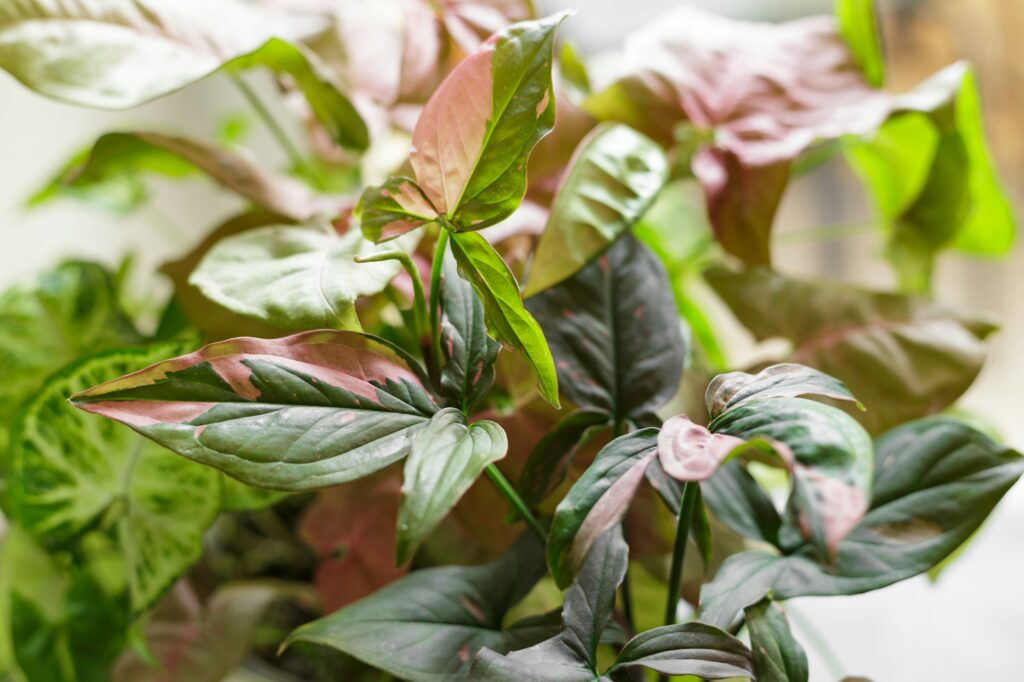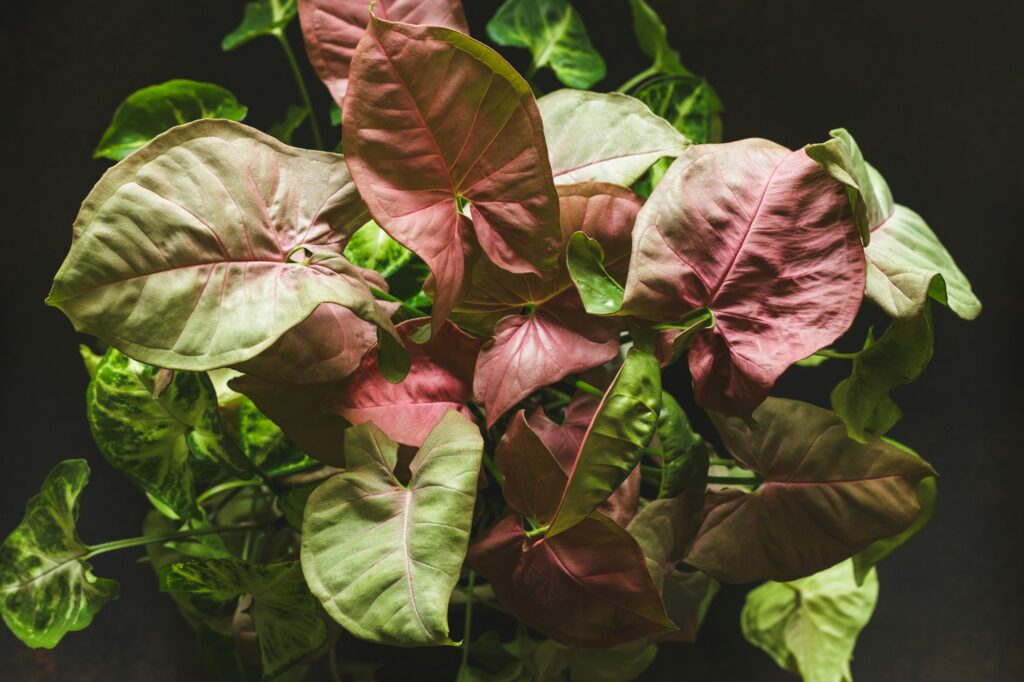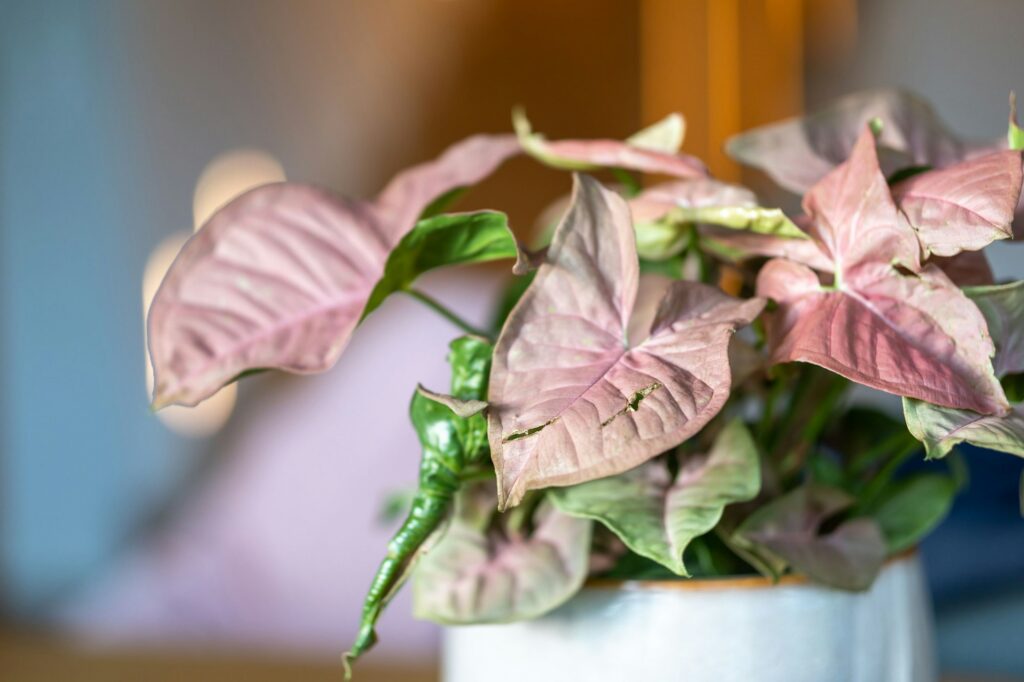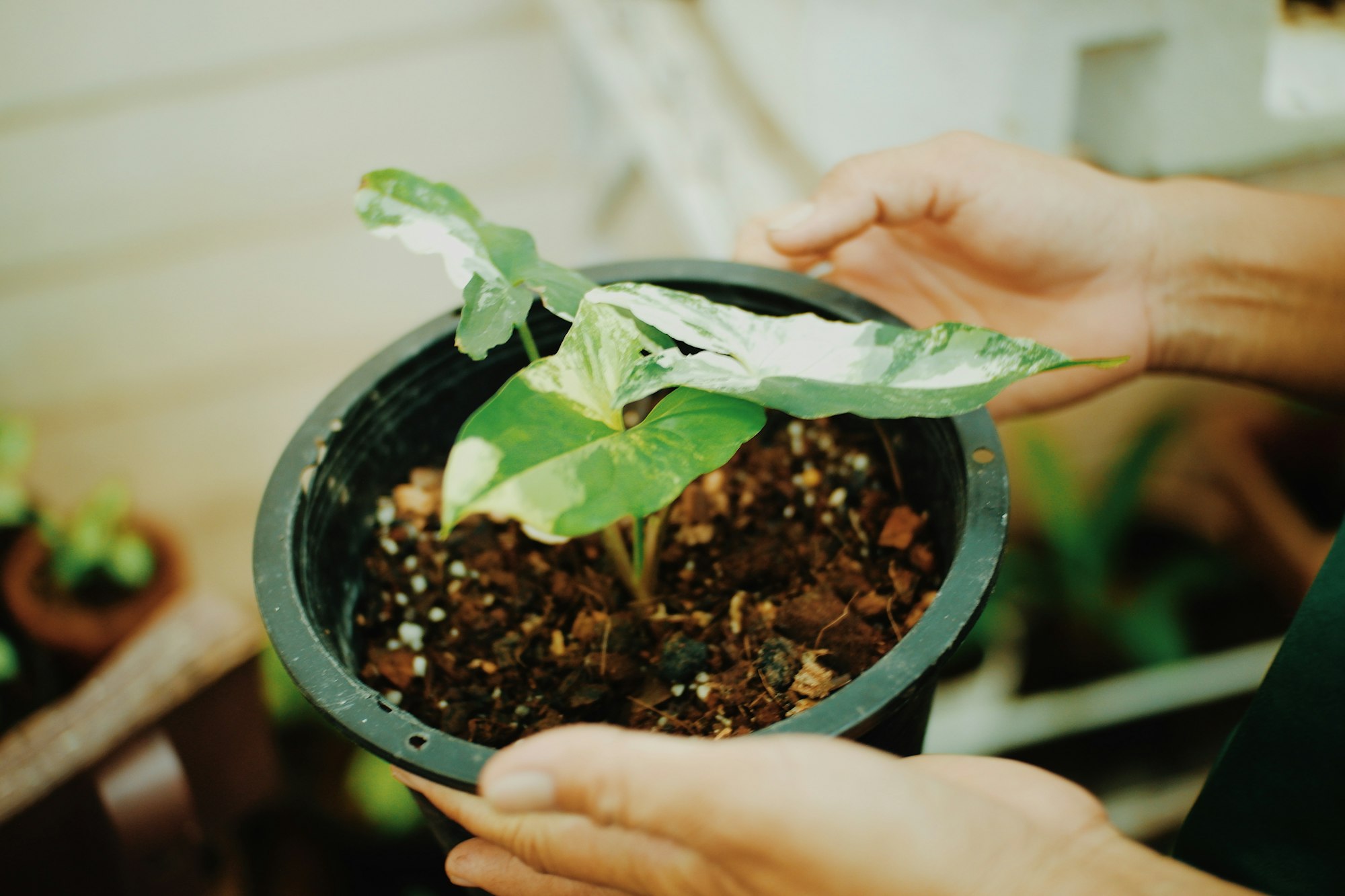Heya, plant rockstars! Today, I’m chatting Syngoniums, those charming, arrowhead-shaped beauties that bring a touch of the tropics to any home. Whether you’re a seasoned plant parent or a total newbie, these tips will help you keep your Syngonium thriving.

Light Requirements
Syngoniums are pretty easygoing when it comes to light. They thrive in bright, indirect light but can also tolerate low-light conditions. If you notice the leaves turning a bit dull, it might be a sign they need more light. But beware of direct sunlight—it can scorch those lovely leaves.
Watering Your Syngonium
These plants enjoy consistently moist soil, but they don’t like to sit in water. Overwatering can lead to root rot, a common enemy of houseplants. Here’s a little tip: water your Syngonium when the top inch of soil feels dry. And remember, it’s better to underwater than overwater.
Humidity and Temperature
Syngoniums love humidity, which makes them perfect for bathrooms or kitchens. If the air in your home is dry, consider misting the leaves or using a humidity tray. As for temperature, they’re quite comfortable in the same range as most people—between 60°F and 75°F (15°C to 24°C). Keep them away from cold drafts and sudden temperature changes.

Feeding Your Plant
Feed your Syngonium with a balanced, water-soluble fertilizer every month during the growing season (spring and summer). In fall and winter, you can cut back on feeding since the plant’s growth slows down.
Pruning and Maintenance
Syngoniums are fast growers and can become quite leggy if not pruned regularly. Trim back the stems to encourage bushier growth and remove any yellowing or damaged leaves. Don’t be afraid to shape your plant to keep it looking its best.

Repotting Your Syngonium
Your Syngonium will need repotting every couple of years. Choose a pot that’s one size larger and use fresh potting mix to give your plant a nutrient boost. Spring is the best time to repot since the plant will be entering its active growing season.
Dealing with Pests
Syngoniums are generally pest-resistant, but they can occasionally attract spider mites or aphids. A quick shower with lukewarm water or a gentle wipe with soapy water can keep these pests at bay.
Propagation Tips
Want more Syngoniums? Propagation is a breeze! Simply take a cutting with at least one node and place it in water or directly into soil. In a few weeks, you’ll see roots forming, and voila—you have a new plant!
Final Thoughts
Syngoniums are versatile, resilient, and a joy to grow. With their striking foliage and easy-care nature, they’re a fantastic addition to any indoor plant collection. So go ahead, give your Syngonium some love, and watch it flourish!
Happy planting, my friends! 🌿






